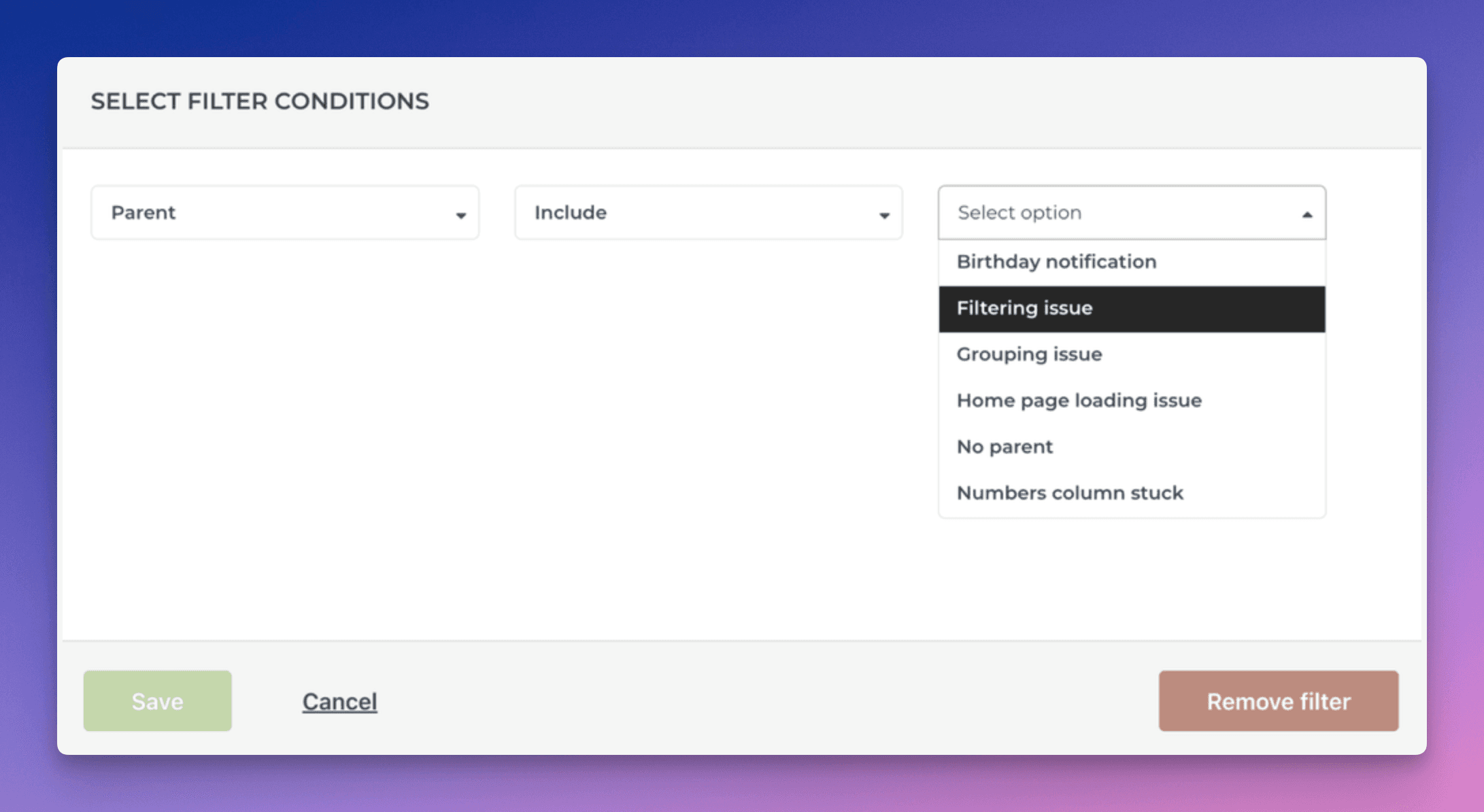Creating charts from both Linear issues and sub-issues
You can create charts based on tour top-level issues or sub-issues. Here’s an example Task List that contains both issues and sub-issues of a Linear project:
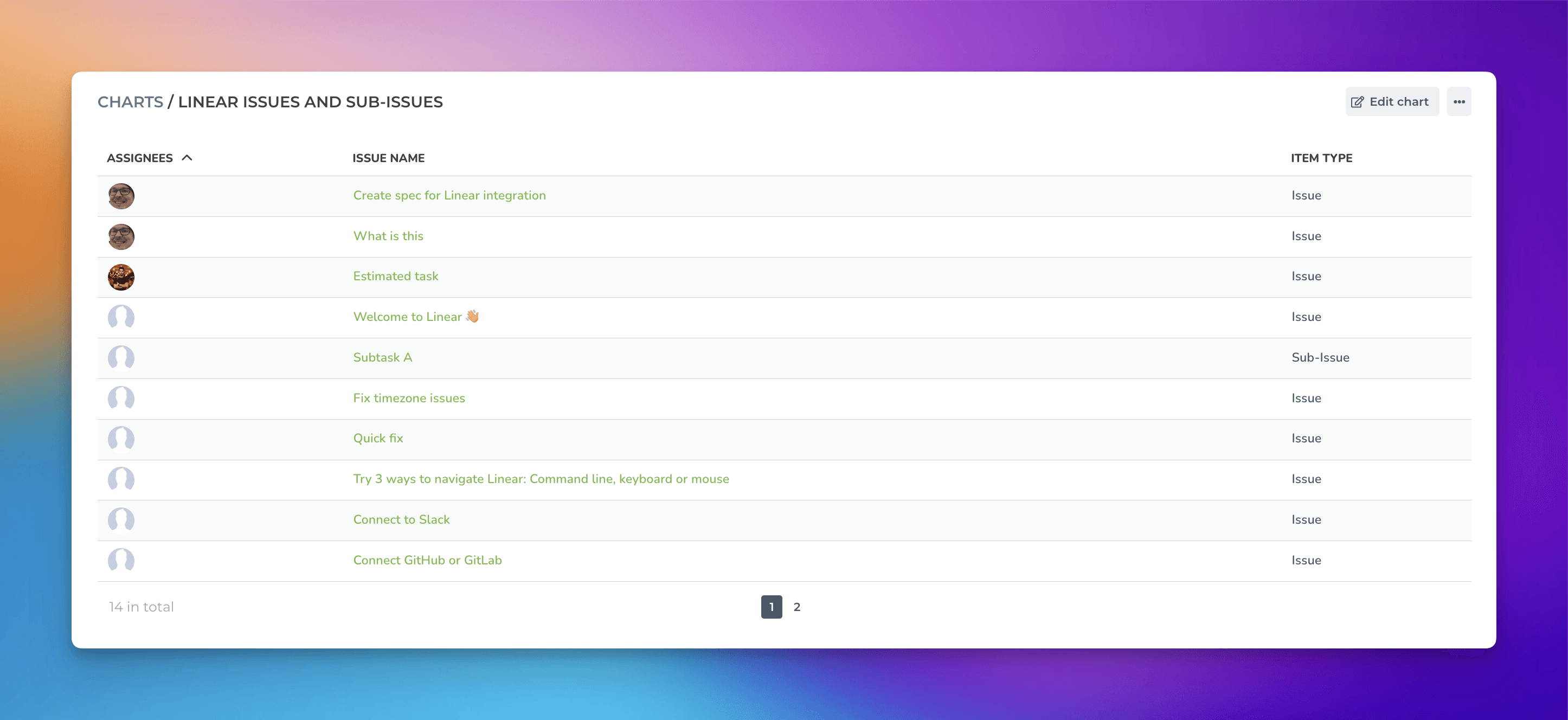
The rightmost column shows the item type: Issue or Sub-issue.
With the charts that support grouping, you can also group data by item type. This can be helpful if you want to track the number of issues and sub-issues in your projects:
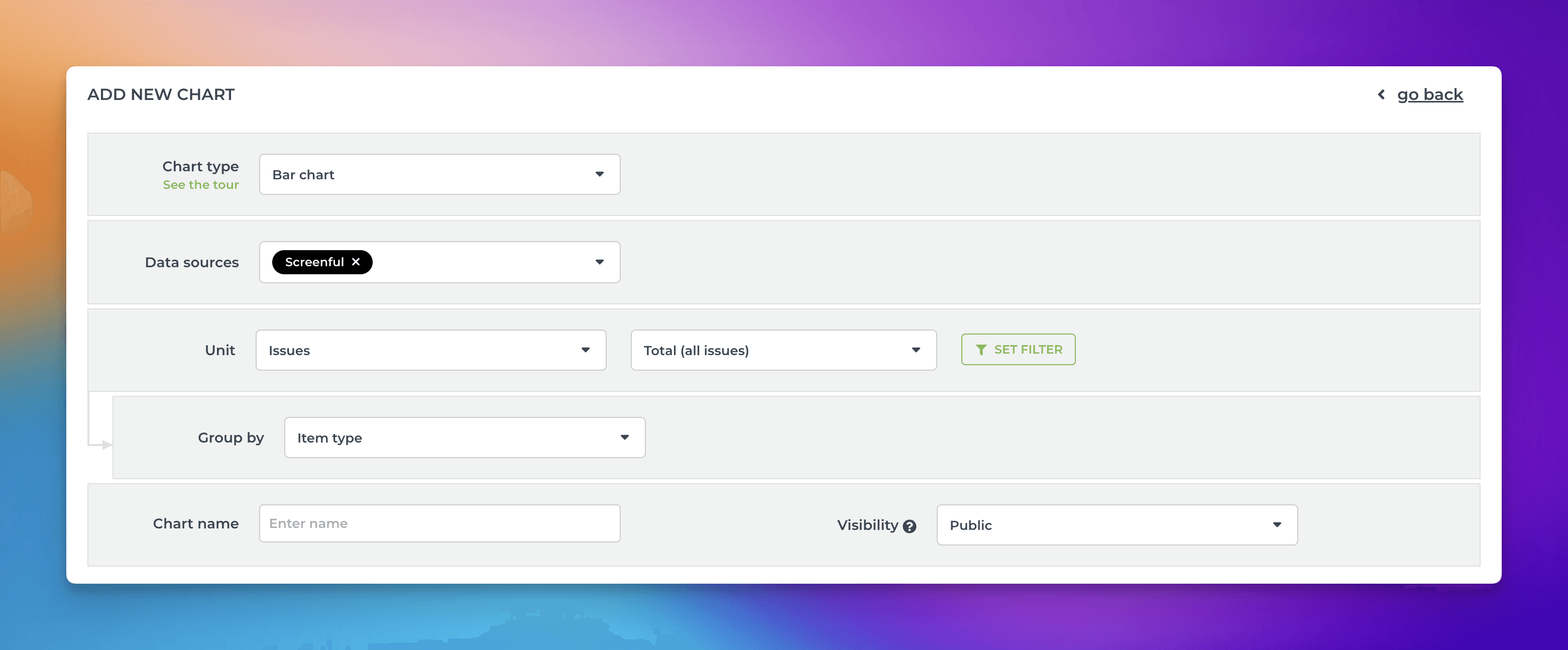
Here’s the resulting chart:

Rolling up values from sub-issues
You can roll up values from sub-issues by selecting Parent as the row in the Table chart.
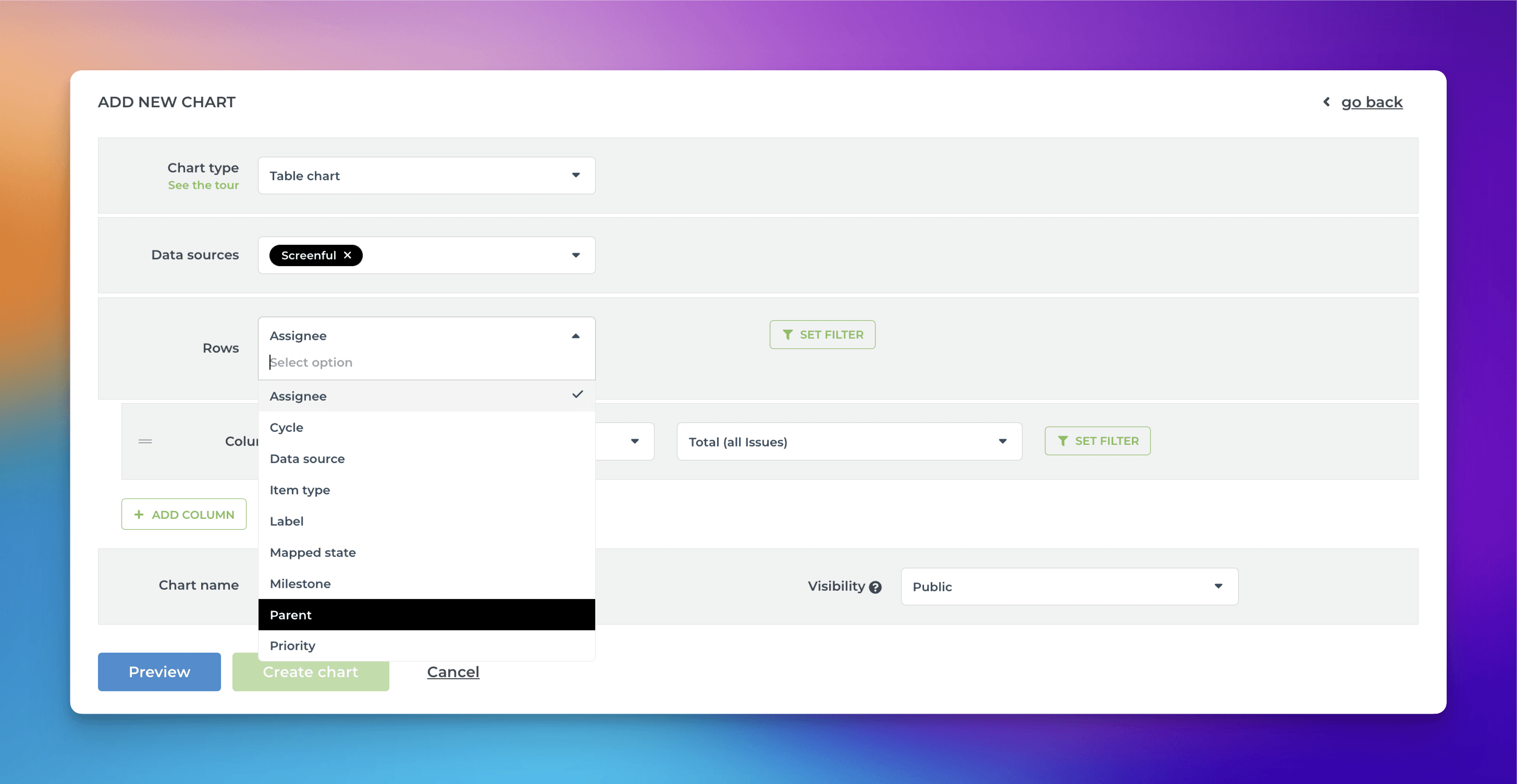
Now each row in the table corresponds to the top-level issue, and the metrics shown in columns are the summaries from the sub-issues. For example, a column can show the total number of sub-issues for a parent, the total number of completed sub-issues, or the number of story points assigned to sub-issues.
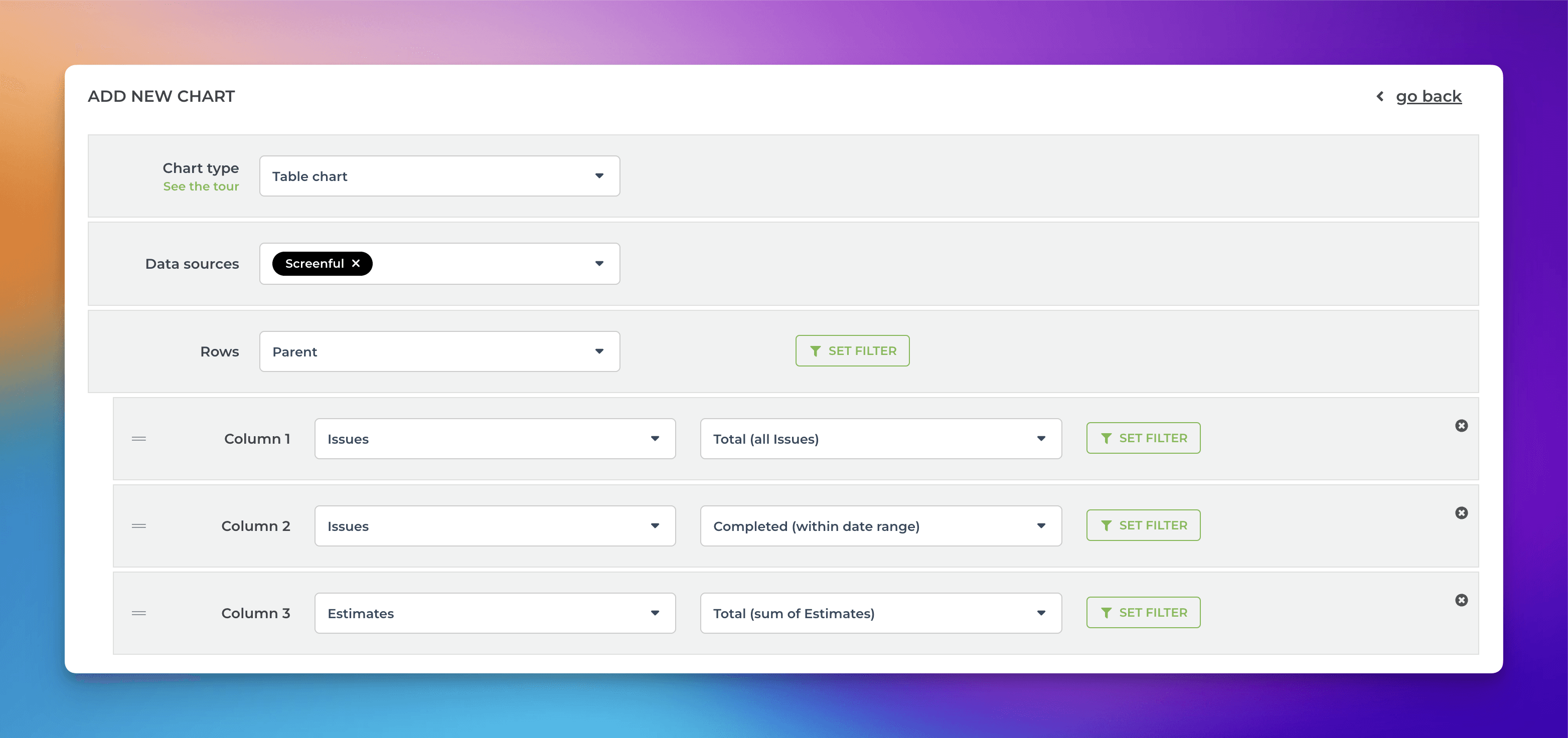
The columns are configurable, so you can roll up any available metrics from sub-issues. The progress bar can be used to show the completion percentage of the sub-issues. It can be added to the chart by applying a formula:

Here’s the final chart:

Filtering by sub-issues
In the chart settings, you can include or exclude sub-issues using the item type filter:

Clicking Set filter opens the filter modal:
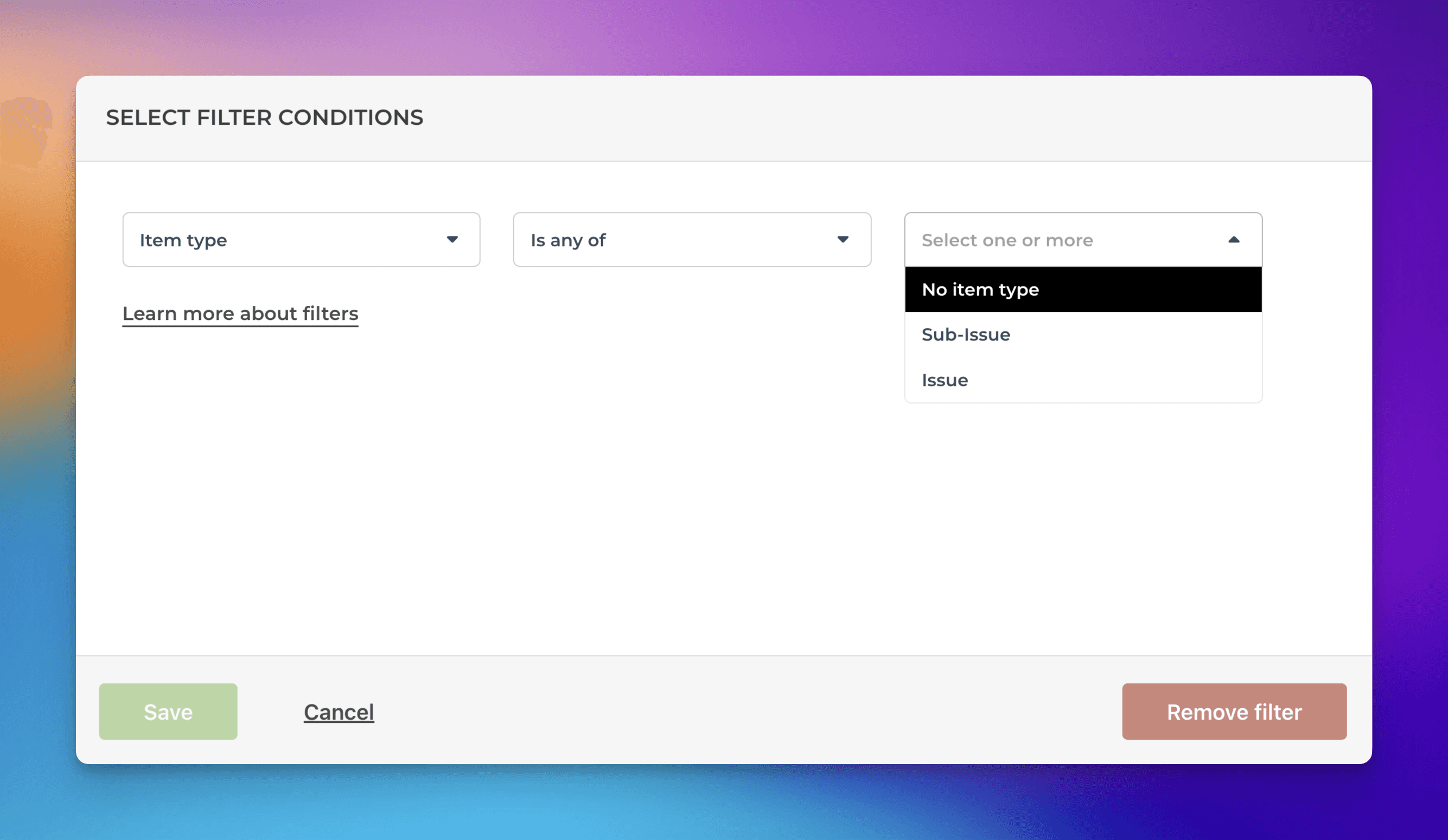
Similarly, you can also filter by sub-issues’ parents (top-level issues):
